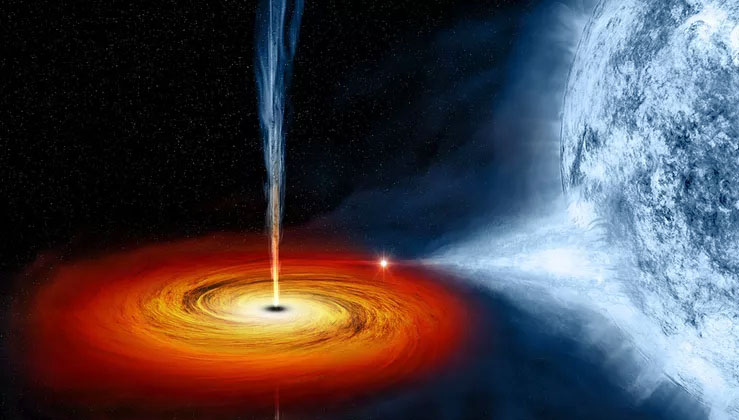
Black holes are the strangest, most powerful objects in the universe — where gravity rules, time bends, and the laws of physics break down. Discover seven truly bizarre facts that prove black holes are even weirder than science fiction.
1. Black Holes Twist Time and Space to the Extreme
Venture near a black hole and reality begins to warp. Their immense gravitational pull distorts both time and space — a phenomenon predicted by Einstein’s theory of general relativity. As you approach the event horizon, time slows down drastically compared to an outside observer. Cross that invisible boundary and you’re doomed to be stretched into spaghetti by gravitational forces in a process scientists literally call “spaghettification.” At the center lies the singularity — a point of infinite density where the known laws of physics completely collapse.
2. They Exist in All Sizes — From Atom-Small to Galaxy-Size
Black holes aren’t one-size-fits-all. Stellar-mass black holes form from collapsed massive stars and usually have 5 to 20 times the mass of our Sun. At the other extreme are supermassive black holes, which can contain the mass of millions or even billions of suns and sit at the centers of galaxies — like Sagittarius A*, the 4-million-solar-mass black hole at the heart of the Milky Way. Scientists also theorize the existence of primordial black holes, smaller than atoms but potentially as heavy as mountains, formed moments after the Big Bang.
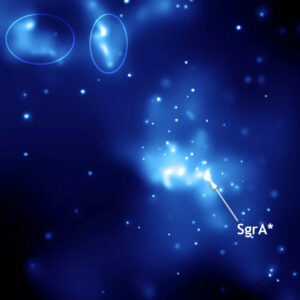
3. They’re Everywhere — And We’re Just Beginning to Count
The Milky Way alone may host up to a billion stellar black holes, along with its central supermassive one. Multiply that across more than 100 billion known galaxies and the total number becomes mind-boggling. With the discovery of intermediate-mass black holes and elusive “quiet” black holes that consume matter slowly and emit little radiation, the black hole population is likely far greater than once imagined.
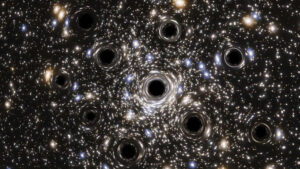
4. Black Holes Eat Stars — But Also Spit Stuff Out
Despite their insatiable reputation, black holes don’t actively hunt matter. Instead, they feed on anything that strays too close — like stars, gas, or dust. One star has been observed being slowly devoured over a decade, the longest black hole meal ever recorded. But some matter doesn’t make it all the way in. It gets flung from the accretion disk before crossing the event horizon, forming planet-sized “spitballs” that rocket into space at millions of miles per hour. It’s one of the rare ways black holes give more than they take.
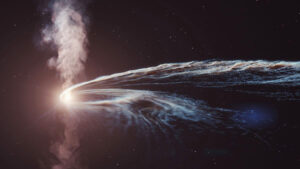
5. They Can Create New Stars — and Control Galaxies
Supermassive black holes don’t just destroy; they also create. Observations show that these cosmic giants can expel material that forms new stars — even beyond their own galaxies. Research has also found a curious relationship: galaxies with larger central black holes tend to shut down star formation faster. In essence, black holes influence how many stars a galaxy gets and when that process stops, playing a surprising role in cosmic evolution.
6. Scientists Have Finally Seen the “Edge”
For decades, black holes were theoretical — until technology caught up. In 2019, the Event Horizon Telescope captured the first image of a black hole’s event horizon — the glowing ring surrounding the blackness — in the galaxy Messier 87. Dubbed “Pōwehi,” the image confirmed what theory long predicted and opened a new chapter in black hole science. Soon after, astronomers imaged the Milky Way’s own central black hole, Sgr A*, giving humanity its first glimpse of the invisible giants shaping our universe.
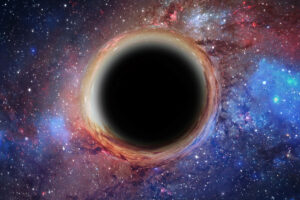
7. Some Seem to Be Perfectly Aligned Across the Universe
One of the strangest discoveries yet: several supermassive black holes in distant galaxies — separated by hundreds of millions of light-years — seem to be aligned. Their powerful jets of gas and energy are mysteriously pointed in the same direction, as if they were synchronized. Scientists believe this might have occurred during the early universe’s formation, but the exact cause remains unknown. It’s a cosmic riddle suggesting that black holes — and maybe the entire universe — are more interconnected than we ever imagined.





